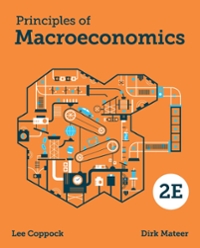Question
Economics Questions 1. Which of the following statements is true? (a) The best thing that the Fed can do right now to lower inflation is
Economics Questions
1. Which of the following statements is true?
(a) The best thing that the Fed can do right now to lower inflation is to raise taxes.
(b) At the last several meetings, the Fed raised its target Fed Funds rate by 0.75%. A hawkish decision at the next FOMC meeting would be higher target, a dovish policy would be lower target.
(c) The next FOMC meeting is jot until February.
(d) If the Fed wants to engineer a "soft landing," it should a hawkish policy decision at their next meeting.
2. Assume that the Federal Reserve implements a policy that is designed to raise the targe Fed Funds rate. This monetary policy is most likely to shift:
AD4 to AD3
AD1 to AD4
AD3 to AD4
AD1 to AD2
3. Which of the following best describes the current state of the federal government's demand management policy?
(a). Both Congress and the Fed are implementing policies that will shift the aggregate demand curve to the left.
(b). Both Congress and the Fed are implementing policies that will shift the aggregate demand curve to the right.
(c). increases the discount rate
(d). The Fed is implementing policies that will shift the aggregate demand curve to the left, and Congress is implementing policies that will shift the aggregate demand curve to the right.
(e). The Fed is implementing policies that will shift the aggregate demand curve to the right, and Congress is implementing policies that will shift the aggregate demand curve to the left.
4. Which of the following would the Fed do in order to close an inflationary gap?
(a). Print money to purchase illiquid revenue producing assets from commercial banks.
(b). Lower the discount rate.
(c). Lower the reserve requirement.
(d). Sell bonds to commercial banks at a really good price.
5. The purpose of monetary policy is to:
(a). shift the aggregate demand curve.
(b). close inflationary and recessionary gaps.
(c). 20%
(d). Influence commercial interest rates to find the optimal balance between inflation and unemployment.
(e). All of the above are correct.
6. The Federal Reserve Banks perform essentially the same functions for:
(a). the general public as do commercial banks and thrift institutions.
(b). federal government as does the U.S. Treasury.
(c). commercial banks and thrift institutions as those institutions do for the public.
(d). commercial banks and thrifts as does the Federal Deposit Insurance Corporation.
7. The Federal Open Market Committee (FOMC) of the Federal Reserve System is primarily responsible for:
(a). setting the Fed's monetary policy and directing the buying and selling of government securities.
(b). handling the Fed's collection of checks and adjusting legal reserves among banks.
(c). supervising the operation of banks to make sure they follow regulations and monitoring banks so they do not engage in fraud.
(d). all of the above.
8. Which of the following statements is true?
a. The Fed can shift the aggregate demand curve to the right by increasing the reserve ratio.
b. Open market operations are the most frequently utilized means by which the Fed attempts to influence interest rates.
c. The Federal Funds Rate is the rate that the Fed charges for loans to banks.
d. The Fed was established in 1936 as part of FDR's New Deal.
9. Which of the following statements is true?
(a). The Fed print's money to buy illiquid assets from commercial banks, flooding their vaults with cash and motivating them to reduce interest rates.
(b). The policies by the Fed must be approved by Congress before they can be implemented.
(c). When the Fed prints money, it adds to the public debt.
(d). All of the above statements are true.
Step by Step Solution
There are 3 Steps involved in it
Step: 1

Get Instant Access to Expert-Tailored Solutions
See step-by-step solutions with expert insights and AI powered tools for academic success
Step: 2

Step: 3

Ace Your Homework with AI
Get the answers you need in no time with our AI-driven, step-by-step assistance
Get Started


